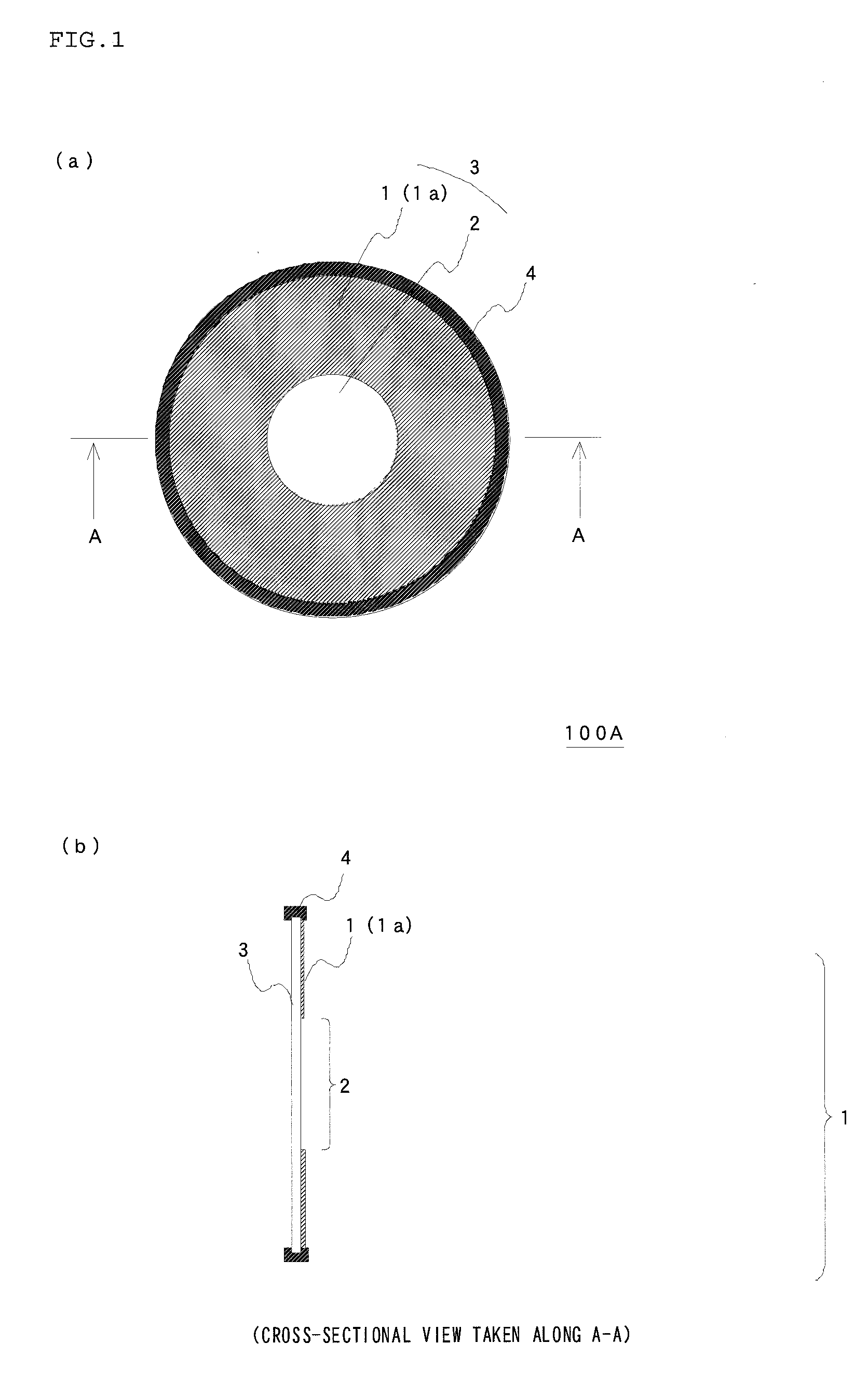Illumination aperture diaphragm
a technology of aperture diaphragm and aperture diaphragm, which is applied in the direction of optical radiation measurement, fluorescence/phosphorescence, nuclear engineering, etc., can solve the problems of buried fluorescence image, and difficult to accurately observe the portion emitting fluorescent light in the subject image, so as to prevent the fluorescence image and improve the light ratio
- Summary
- Abstract
- Description
- Claims
- Application Information
AI Technical Summary
Benefits of technology
Problems solved by technology
Method used
Image
Examples
Embodiment Construction
[0036]Now, the present invention will be described in more detail below with reference to the drawings. Note that the same reference characters refer to the same or equivalent elements in all the drawings.
[0037]FIG. 1 includes a plan view (FIG. 1(a)) and a cross-sectional view (FIG. 1(b)) taken along A-A illustrating a doughnut-shaped aperture diaphragm 100A which is an embodiment of a first illumination aperture diaphragm according to the present invention. The doughnut-shaped aperture diaphragm 100A is made up of a flat plate-like base material 3, which has an annular filter region 1 and a circular aperture region 2 formed inside the filter region 1, and an outer frame 4 fitted over the outer periphery of the flat plate-like base material 3. More specifically, the filter region 1 has a filter layer 1a which is annularly provided on a surface of the circular, transparent, flat, plate-like base material 3, and the center region of the flat plate-like base material 3 on which no filt...
PUM
| Property | Measurement | Unit |
|---|---|---|
| wavelength | aaaaa | aaaaa |
| wavelength | aaaaa | aaaaa |
| wavelength | aaaaa | aaaaa |
Abstract
Description
Claims
Application Information
 Login to View More
Login to View More - R&D
- Intellectual Property
- Life Sciences
- Materials
- Tech Scout
- Unparalleled Data Quality
- Higher Quality Content
- 60% Fewer Hallucinations
Browse by: Latest US Patents, China's latest patents, Technical Efficacy Thesaurus, Application Domain, Technology Topic, Popular Technical Reports.
© 2025 PatSnap. All rights reserved.Legal|Privacy policy|Modern Slavery Act Transparency Statement|Sitemap|About US| Contact US: help@patsnap.com



